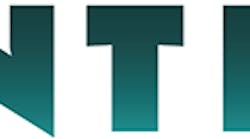Yokogawa announced May 25 that it and Shell have jointly developed Platform for Advanced Control and Estimation R5.03, and released it on June 2 as part of Yokogawa's OpreX asset operations and optimization family.
The platform is a software suite that brings together Shell's advanced plant process control technology and Yokogawa's real-time control technology to help customers improve productivity by increasing product yield and reducing energy consumption. This version upgrade supports OPC UA, which is the latest version of the communication strategy for improving plant systems interoperability and security, and helps users digitally transform to transition to industrial autonomy.
In general, Yokogawa's new platform will let process application and lab updates run faster and be more robust. Major applications for the platform are expected to be advanced control of continuous plant processes in the oil, petrochemical, chemical, gas, and other industries.
Advanced process control (APC) systems improve product yield and reduce energy consumption by maintaining temperature, flow rate, pressure and other process values within a set range and keeping them as close as possible to their optimal set points. Such systems are increasingly used in facilities such as oil refineries, petrochemical plants, chemical plants and LNG trains. The new platform provides:
-
Multivariable, model-predictive control based on predictions made using models of dynamic characteristics of plant responses.
-
Soft sensing for estimating quality in real-time based on temperature, flow rate, pressure and other process values
-
Customization of calculations
Yokogawa continues to enhance the suite in response to changing requirements. The release of version R5.03 meets urgent industry needs for enhanced plant systems interoperability and security. These enhancements include:
-
Feature expansion, such as support for OPC UA, V5.03, which lets users securely exchange data with OPC UA devices and work with data from a wider range of sources.
-
Adding a new base-layer control (BLC) model that adds proportional integral differential (PID) control logic. This model uses the PID parameters of a distributed control system (DCS) to represent the dynamics of a PID loop. This improves control by reducing mismatches with the process described by the BLC model.
-
Expansion of shed logic to event logic. Shed Logic is a function that customizes how applications operate. It gives users the freedom to customize the behavior of their applications to suit the operating conditions of a plant. Shed Logic is now called Event Logic, with expanded functionalities that eliminate the need for custom code and enable event-based processing for measurement validation, model change, etc.
Likewise, improved maintenance features in Yokogawa's new platform include:
-
Design-time advisor that verifies parameter values for applications, processors and variables set using design-time, and displays a warning message for any invalid parameter settings. By making it easier to identify and correct configuration errors, this helps to improve applications.
-
Automatic trend scaling. The scale of the trend pen (upper and lower limits of the trend display) can now be adjusted automatically. This feature reduces the time and effort required for setting the trend scale.
-
Visualization of OPC performance data, which makes it possible to view OPC performance metrics such as read time when accessing data from an OPC data access/unified architecture (DA/UA) server. In addition, a list can be displayed that shows all accessible OPC items. This feature makes the diagnosis of OPC DA/UA access easier.



